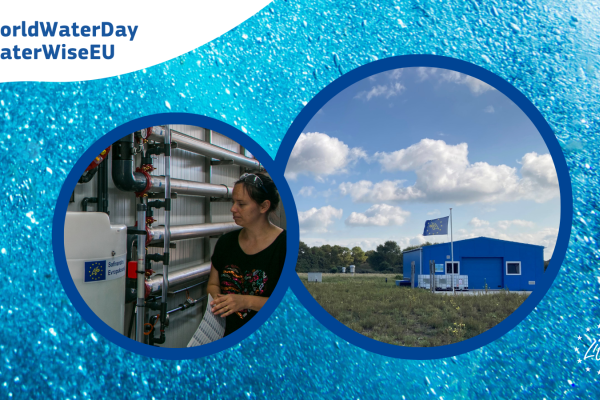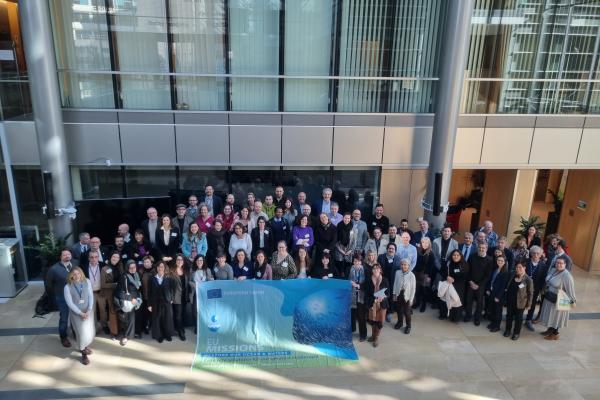Overview
Citizens, nature and industry all need healthy rivers and lakes, groundwater and bathing waters. The Water Framework Directive (WFD) focuses on ensuring good qualitative and quantitative health, i.e. on reducing and removing pollution and on ensuring that there is enough water to support wildlife at the same time as human needs.
Since 2000, the WFD has been the main law for water protection in Europe. It applies to inland, transitional and coastal surface waters as well as groundwaters. It ensures an integrated approach to water management, respecting the integrity of whole ecosystems, including by regulating individual pollutants and setting corresponding regulatory standards. It is based on a river basin district approach to make sure that neighbouring countries cooperate to manage the rivers and other bodies of water they share.
Objectives
The key objectives of the WFD are set out in Article 4 of the Directive. It requires Member States to use their River Basin Management Plans (RBMPs) and Programmes of Measures (PoMs) to protect and, where necessary, restore water bodies in order to reach good status, and to prevent deterioration. Good status means both good chemical and good ecological status.
Law
The Water Framework Directive (WFD) is the primary legislation. It is supported by two so-called daughter directives on the quality and quantity of groundwater and on the quality of surface water. The WFD contains provisions regarding the deadlines for meeting the objectives of the Directive, as well as provisions on exemptions. The annexes to the WFD specify details as regards, for example, monitoring requirements, the criteria for assessing water body status, and the contents of the RBMPs.
At present, the WFD includes in its Annex X the list of priority substances that Member States must monitor in surface waters, but the standards for them are set in the Environmental Quality Standards Directive (EQSD) and must be met to achieve good surface water chemical status in accordance with WFD Article 4 and Annex V point 1.4.3. The WFD also requires Member States to set and meet Environmental Quality Standards (EQS) for substances of national concern, i.e. river basin specific pollutants; the monitoring of which currently contributes to the assessment of ecological status. This list of priority substances needs to be reviewed, and updated if necessary, every 6 years.
Similarly, the list of pollutants and standards of EU-wide concern in Annex I to the Groundwater Directive (GWD) must also be reviewed every 6 years; these contribute to the assessment of chemical status in groundwater. That Directive also complements the WFD by including requirements as regards pollutant trends and quantitative status.
Review
In December 2019, a Fitness Check concluded that the water legislation is broadly fit for purpose, with room for improvement related to investments, implementation, integrating water into other policies, chemical pollution, administrative simplification and digitalisation. The key findings show that the directives have led to a higher level of protection for water bodies and flood risk management than could have been expected without them. The objectives of the directives are as relevant now as they were at the time of the adoption, if not more. They contribute to achieving a range of sustainable development goals.
Proposal to revise the water legislation
In October 2022, the Commission adopted a proposal to revise the lists of pollutants in surface water and groundwater. Some other amendments are also proposed.
If the proposal is agreed by the Council and the European Parliament, Member States will be required to take measures to meet the quality standards for the additional pollutants, and to make their monitoring data available on a more frequent basis.
Implementation
Many European river basins are international, crossing administrative and territorial borders. Therefore a common understanding and approach is crucial to the successful and effective implementation of the Directive.
River Basin Management Plans
These are the key tools for implementing the WFD. They are drawn up after extensive public consultation and are valid for a six-year period.
Other key documents and links to the reported River basin management plans - along with other important information from the process of implementing the Water Framework Directive are available here.
Several International River Basin Districts have also published River Basin Management Plans: Danube, Elbe, Ems, Finnish-Norwegian International River Basin District, Rhine, Scheldt / l'Escaut, Sava Commission (ISRBC)
Common Implementation Strategy (CIS)
The implementation of the WFD raises a number of shared technical challenges for the Member States, the Commission, the Candidate and EEA Countries as well as stakeholders and NGOs. In order to address the challenges in a co-operative and coordinated way, the Member States, Norway and the Commission agreed on a Common Implementation Strategy (CIS) for the Water Framework Directive only five months after the entry into force of the Directive. The CIS aims to ensure the coherent and harmonious implementation of the WFD and its daughter directives.
Working Groups and Guidance documents
Within this framework, several technical Working Groups operate, for example by producing Guidance documents on technical aspects, key events and additional thematic documents.
Organisations interested in joining the Strategic Co-ordination Group, or any of the CIS Working Groups, should send their application to the following email address: ENV-WATER ec [dot] europa [dot] eu (ENV-WATER[at]ec[dot]europa[dot]eu). The application should be accompanied by all the relevant supporting documents, including justification that the organisation fulfils the eligibility criteria set out in the Rules of Procedure.
ec [dot] europa [dot] eu (ENV-WATER[at]ec[dot]europa[dot]eu). The application should be accompanied by all the relevant supporting documents, including justification that the organisation fulfils the eligibility criteria set out in the Rules of Procedure.
Useful links
List of national competent authorities and relevant national implementation websites.






